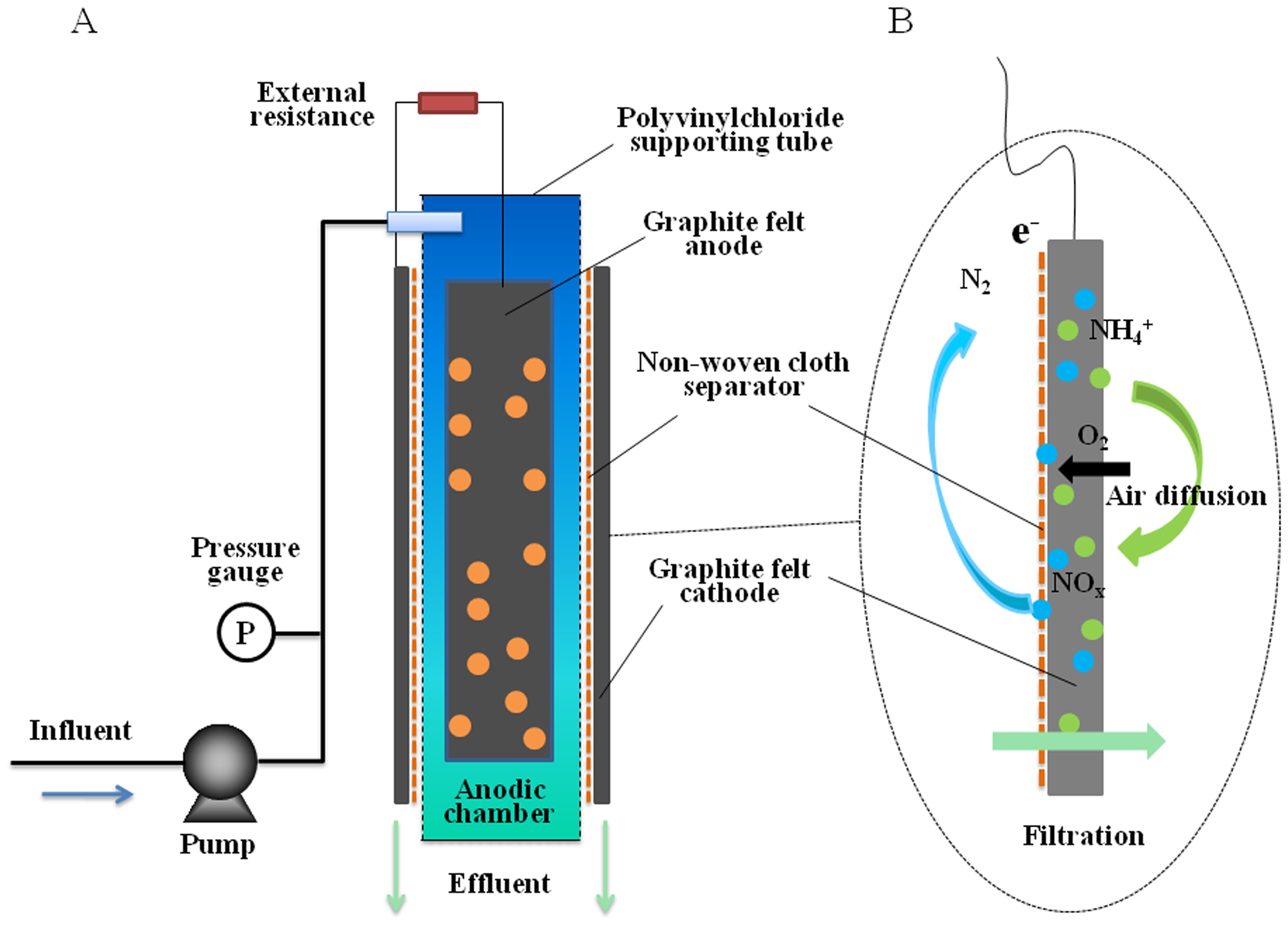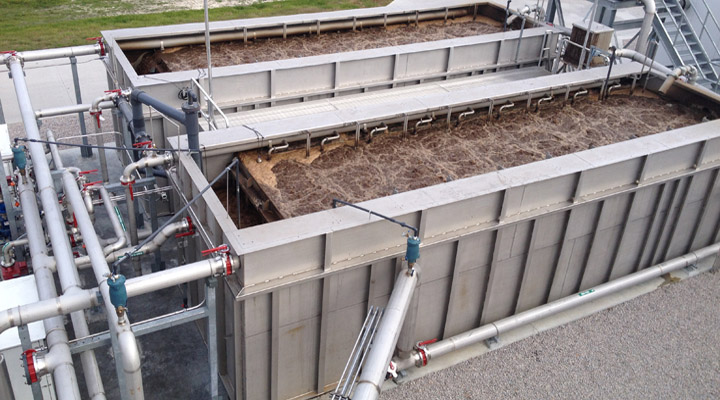The Advantages of Membrane Bioreactors in Lasting Wastewater Management
Membrane bioreactors (MBRs) represent a critical improvement in lasting wastewater management, efficiently merging organic treatment with innovative membrane filtration innovation. This assimilation not just improves effluent high quality by effectively removing impurities but also opens opportunities for water reuse in numerous applications, therefore dealing with journalism requirement for resource conservation. The small layout of MBRs adds to significant decreases in environmental impact and operational prices. As the need for sustainable remedies escalates, checking out the complex advantages of MBRs might reveal unexpected implications for the future of wastewater treatment systems.
Overview of Membrane Layer Bioreactors
Membrane bioreactors (MBRs) stand for a considerable development in wastewater therapy innovation, incorporating biological destruction with membrane filtration to boost the effectiveness of the therapy process. This ingenious system combines the advantages of conventional turned on sludge processes with membrane modern technology, permitting enhanced solid-liquid splitting up. MBRs utilize semi-permeable membrane layers to different cured water from biomass, resulting in high-grade effluent that can be reused or safely released right into the environment.
The operational layout of MBRs generally involves a bioreactor where bacteria damage down natural matter, followed by a membrane layer device that filterings system the mixed liquor. This arrangement not just lessens the footprint of the treatment facility however additionally enables higher biomass focus and lowered hydraulic retention times. Furthermore, MBRs can dealing with a wider variety of pollutants, consisting of nutrients and pathogens, making them ideal for numerous applications, from municipal wastewater treatment to industrial effluent handling.
The assimilation of MBRs right into wastewater management systems is a sign of a growing trend towards effective and lasting methods in ecological design. Their capability to create top notch effluent while lessening space demands settings MBR innovation as a principal in contemporary wastewater therapy services.
Enhanced Effluent Quality

The membrane layer filtering process acts as a physical barrier, making it possible for the retention of bacteria and particulate issue, which adds to a clearer and cleaner effluent (Membrane Bioreactor). Furthermore, MBRs run at higher biomass focus than traditional activated sludge systems, promoting a lot more effective biodegradation of toxins. This causes a reduction in biochemical oxygen need (BODY) and overall suspended solids (TSS) degrees in the last effluent
Furthermore, MBRs demonstrate excellent efficiency in treating difficult wastewater compositions, such as commercial effluents and wastewater with high nutrient lots. Because of this, the effluent generated is typically of better, permitting even more flexible disposal choices and lowered environmental effect. Ultimately, the improved effluent top quality achieved with MBR modern technology underscores its important role beforehand lasting wastewater management techniques.
Water Reuse Opportunities
The top notch effluent generated by membrane bioreactors (MBRs) opens up considerable possibilities for water reuse in various applications. MBRs efficiently remove contaminants, consisting of pathogens, suspended solids, and raw material, causing cured water that meets or surpasses regulative criteria for reuse. This top quality permits the execution of water recycling initiatives across diverse industries.
One prominent application remains in farming, where dealt with wastewater can be made use of for watering, advertising lasting farming methods while saving freshwater resources. Furthermore, MBR-treated effluent can be made use of for industrial procedures such as cooling, cleansing, and as a procedure water resource, significantly reducing the demand for potable water in these operations.
In metropolitan Bonuses settings, MBRs promote making use of redeemed water for landscape watering, bathroom flushing, and various other non-potable usages, adding to the general durability of water system systems. The assimilation of MBR innovation in decentralized systems aids in managing localized water demands, particularly in water-scarce areas.
Lowered Ecological Impact
Exactly how can the adoption of membrane bioreactors (MBRs) add to a minimized environmental effect in wastewater administration? MBRs considerably enhance the therapy performance of wastewater while reducing environmental disturbances. By incorporating biological therapy processes with membrane layer purification, MBRs efficiently remove a wide variety of pollutants, consisting linked here of raw material, nutrients, and pathogens. This sophisticated purification results in higher-quality effluent, which is crucial for shielding water ecological communities and lowering the problem on all-natural water bodies.
Moreover, MBRs operate at lower hydraulic retention times contrasted to conventional systems, leading to smaller therapy plant impacts. This compact style reduces land usage, consequently preserving natural habitats and biodiversity. The procedure additionally creates less sludge than standard approaches, mitigating disposal difficulties and lowering greenhouse gas discharges related to sludge management.
Additionally, MBRs assist in the recuperation of valuable sources, such as water and nutrients, adding to a round economic situation. By enabling water reuse for irrigation or industrial procedures, MBRs aid alleviate freshwater scarcity, thus advertising lasting water make use of practices. Ultimately, the adoption of MBR modern technology represents a considerable stride towards lessening the ecological effect of wastewater monitoring systems.
Economic Benefits of MBRs

Additionally, MBRs help with the manufacturing of high-grade effluent, which can be reused for numerous applications, such as farming watering and industrial processes - Membrane Bioreactor. This reuse ability can dramatically reduce water purchase prices, offering a financial motivation for sectors dealing with rigorous water regulations
The small design of MBR systems also causes lowered land demands, which is particularly beneficial in city areas where realty is pricey. By decreasing area, markets and municipalities can minimize land purchase and maintenance expenses.
Moreover, MBRs usually need less constant maintenance and have a longer life expectancy than conventional systems, further adding to cost financial savings. In summary, the economic benefits you could try here of MBRs-- ranging from lowered operational prices to land cost savings and effluent reuse-- make them a compelling choice for lasting wastewater management, supplying both immediate and lasting financial advantages.
Verdict
Membrane bioreactors represent a transformative method to lasting wastewater monitoring, incorporating biological treatment with sophisticated membrane layer purification for exceptional effluent quality. Their capability for reliable contaminant removal promotes water reuse, thereby conserving important freshwater resources. Furthermore, MBRs add to minimized environmental impacts with small styles and reduced sludge generation. Economic benefits additionally enhance their feasibility, making MBRs an encouraging remedy for addressing the challenges of wastewater therapy and advertising lasting source monitoring.
Membrane layer bioreactors (MBRs) stand for an essential innovation in lasting wastewater management, efficiently merging organic therapy with innovative membrane filtration technology.Membrane layer bioreactors (MBRs) stand for a significant advancement in wastewater therapy modern technology, integrating biological destruction with membrane layer purification to boost the effectiveness of the treatment procedure.Accomplishing enhanced effluent high quality is one of the most considerable advantages of making use of membrane bioreactors (MBRs) in wastewater therapy.Furthermore, MBRs demonstrate exceptional performance in dealing with difficult wastewater compositions, such as commercial effluents and wastewater with high nutrient loads.Integrating membrane layer bioreactors (MBRs) right into wastewater monitoring not just minimizes environmental influence but additionally provides substantial economic benefits.